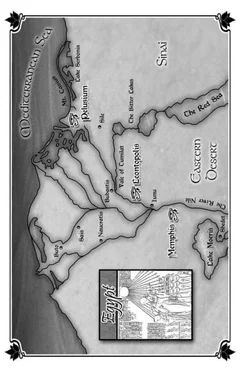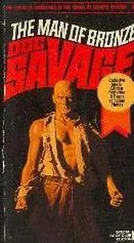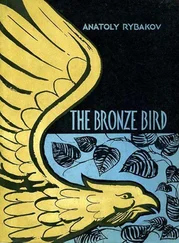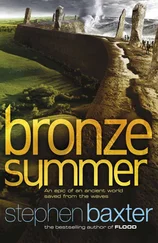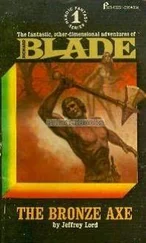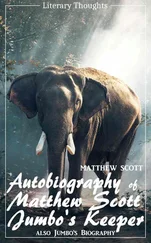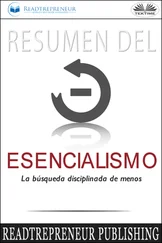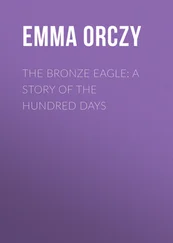Scott Oden - Men of Bronze
Здесь есть возможность читать онлайн «Scott Oden - Men of Bronze» весь текст электронной книги совершенно бесплатно (целиком полную версию без сокращений). В некоторых случаях можно слушать аудио, скачать через торрент в формате fb2 и присутствует краткое содержание. Жанр: Исторические приключения, на английском языке. Описание произведения, (предисловие) а так же отзывы посетителей доступны на портале библиотеки ЛибКат.
- Название:Men of Bronze
- Автор:
- Жанр:
- Год:неизвестен
- ISBN:нет данных
- Рейтинг книги:3 / 5. Голосов: 1
-
Избранное:Добавить в избранное
- Отзывы:
-
Ваша оценка:
- 60
- 1
- 2
- 3
- 4
- 5
Men of Bronze: краткое содержание, описание и аннотация
Предлагаем к чтению аннотацию, описание, краткое содержание или предисловие (зависит от того, что написал сам автор книги «Men of Bronze»). Если вы не нашли необходимую информацию о книге — напишите в комментариях, мы постараемся отыскать её.
Men of Bronze — читать онлайн бесплатно полную книгу (весь текст) целиком
Ниже представлен текст книги, разбитый по страницам. Система сохранения места последней прочитанной страницы, позволяет с удобством читать онлайн бесплатно книгу «Men of Bronze», без необходимости каждый раз заново искать на чём Вы остановились. Поставьте закладку, и сможете в любой момент перейти на страницу, на которой закончили чтение.
Интервал:
Закладка:
Thebes
(Egyptian Waset, modern Karnak and Luxor.) A prominent city in upper Egypt from the New Kingdom (1550–1069 BCE) onward, and the center of the worship of Amon (q.v.). Thebes was located on the Nile's eastern shore, roughly 500 miles south of Memphis and modern Cairo. It stood across the river from a vast necropolis containing, after the pyramids at Giza, some of Egypt's most stunning mortuary complexes, including the rockcut tombs of the Valley of the Kings. Perhaps the city's greatest adornment, though, was the massive temple complex dedicated to Amon, called Ipet-isut (Egyptian "Most Select of Places"), approximately 247 acres of shrines, temples, gardens, lakes, and chapels. Taken as a whole, Ipet-isut represents the largest religious structure ever built by the hand of man. Though the capital shifted north to Sais during the Late Period (664–332 BCE), Thebes remained a significant force in national politics.
Thoth
(Egyptian Djehuty.) The Egyptian god of learning and wisdom, patron of scribes and protector of the priest-physicians. Though normally depicted as an ibis-headed man, Thoth was also associated with the baboon and often assumed this form. The Greeks identified him with their own Hermes. His cult center was in Upper Egypt, at the town of Khemenu (Greek Hermopolis, modern el-Ashmunein).
Tumilat
A fertile valley connecting the eastern Nile delta with the Bitter Lakes (q.v.) and the Red Sea. Its pools and springs presented a tempting target to the water-deprived Bedouin of Sinai (q.v.).
Tyre
Situated a few hundred yards off the Phoenician mainland, the city of Tyre occupied the two largest of a chain of islands, joined by an embankment and a mole to create a pair of excellent harbors. The basis of Tyre's vast maritime empire was the Lebanese cedar and the murex, a species of mollusk that, when boiled, produced a deep purple dye. Tyrian ships ranged the Mediterranean, trading dye and lumber for other commodities — from gold and silver to papyrus and ostrich feathers. Colonists from Tyre founded the North African city of Carthage, c. 814 BCE.
Uadj-Ur
(Egyptian "Great Green".) The Mediterranean Sea.
Uadjet
(Egyptian "healthy eye".) The Eye of Horus (q.v.). Considered the most powerful talisman in ancient Egypt, the Eye symbolized protective strength, watchfulness, and the dominance of good over evil. In mythology, Seth (q.v.) plucked out Horus' left eye in battle as the latter sought to avenge the murder of his father, Osiris (q.v.). Once Horus was victorious, his mother, Isis (q.v.), restored his damaged eye.
Uraeus
Golden image of the cobra-goddess Wadjet, her hood extended in warning, which was attached to the brow of royal crowns and headdresses. The cobra was expected to protect Pharaoh by spitting flames at any who would harm him.
Ushabti
(Egyptian "the Answerers".) Small faience (q.v.) figurines intended to accompany the deceased on their various travels through the afterlife. They were expected to fulfill whatever responsibilities the gods might ask of the deceased, such as manual labor or errand-running. Most tombs included a full complement of uhabti — one for every day of the year plus extras to serve as overseers and managers — roughly four hundred figurines.
Vizier
(Egyptian Yaty.) The chief minister of Egypt, answerable only to Pharaoh. The vizier controlled the food supply, the reservoirs, kept a census on herds, and arbitrated territorial disputes and personal conflicts among the governors of Egypt's provinces. At times, the vizier also controlled access to Pharaoh's person. The office virtually demanded a man of uncommon intelligence and zeal who could be trusted with the business of court; often, the post served as a training ground for royal princes (as well as the occasional queen or princess).
Walls of the Ruler
A series of fortresses along Egypt's eastern border designed to stem the influx of foreigners into the Nile valley. They were garrisoned by elements of the regular army, as well as the Medjay, whose patrol routes took them from Pelusium on the Mediterranean coast to the Gulf of Suez. The Walls of the Ruler were first erected in the Twelfth Dynasty (1985–1773 BCE).
War Crown
(Egyptian khepresh.) The bulbous blue helmet, made of electrum, worn by Pharaoh on campaigns and during military processions.
Way of Horns
The road connecting Egypt with southern Palestine. It begins at Pelusium in the eastern Delta and passes through Sinai (q.v.) and the Negev Desert (q.v.) before reaching Gaza. From there, it continues on into the Phoenician littoral.
Yeb
Known today as Elephantine Island, Yeb occupies the middle of the Nile near the First Cataract (one of six white-water rapids near the Nubian border), facing the modern city of Aswan. The ancient Egyptians considered the island to be of strategic importance; its fortress gave Pharaoh's troops command of the surrounding waterways. Yeb also served as the cult center of the god Khnum (q.v.) and was the site of an important Nilometer (q.v.).
Zagros Mountains
A snow-capped mountain range in the heart of Media, its peaks rising to heights between twelve and fifteen thousand feet as it runs southeast from Mesopotamia. The summer capital of the Persian Empire, Ecbatana, lay in the Zagros Mountains, six thousand feet below the summit of Mount Alwand.
Chronology
Early Dynastic Period: c. 3000–2686 BCE
1" Dynasty: c. 3000–2890 (King Menes unified Upper and Lower Egypt)
2"' Dynasty: 2890-2686
Old Kingdom: 2686–2125 BCE
3" Dynasty: 2686-2613
4"' Dynasty: 2613–2494 (the Pyramids at Giza constructed)
5"' Dynasty: 2494-2345
6"' Dynasty: 2345-2181
7"' and 8"' Dynasties: 2181-2160
First Intermediate Period: 2160–2055 BCE
9"' and 10"' Dynasties: 2160-2025
11"' Dynasty (ruled only at Thebes): 2125-2055
Middle Kingdom: 2055–1650 BCE
11" Dynasty (all Egypt): 2055-1985
12"' Dynasty: 1985-1773
13"' Dynasty: 1773-c. 1650
14"' Dynasty (contemporary with 13`" Dynasty): 1773-1650
Second Intermediate Period: 1650–1550 BCE
15"' Dynasty (Hyksos): 1650-1550
16"' Dynasty (Minor Hyksos, contemporary with 15"' Dynasty): 1650-1580
17"' Dynasty (Thebans, contemporary with 151" and 1611' Dynasties): c. 1580-1550
New Kingdom: 1550–1069 BCE
18"' Dynasty: 1550–1295 (Egypt's "Golden Age"; the Amarna Period; Tutankhamun)
19"' Dynasty: 1295–1186 (the Ramessids; Rameses II, the Great)
20"' Dynasty: 1186-1069
Third Intermediate Period: 1069-664 BCE
21st Dynasty: 1069-945
22"" Dynasty: 945-715
2311 Dynasty (contemporary with late 22°d, 24"1, and early 25th Dynasties): 818-715
24"' Dynasty: 720-715
25"' Dynasty: 747–656 (Nubian pharaohs; the Assyrian conquest)
Late Period: 664–332 BCE
26"' Dynasty: 664–525 (Men of Bronze)
27"' Dynasty (15' Persian Period): 525-404
28"' Dynasty: 404–399 (revolt against Persia)
29t", Dynasty: 399-380
30"' Dynasty: 380–343 (Egypt reconquered)
31st Dynasty (2"d Persian Period): 343-332
Dates for Egyptian pharaohs and events used in Men of Bronze follow those given in: The Oxford History of Ancient Egypt, Ian Shaw, editor (Oxford University Press, 2000) and Monarchs of the Nile, Aidan Dodson (American University in Cairo Press, 2000). Greek dates are derived from: Handbook to Life in Ancient Greece, Lesley and Roy Adkins (Oxford University Press, 1997). Near Eastern dates are from: Babylon, Joan Oates (Thames and Hudson, 1979). All dates are BCE (Before Common Era).
Читать дальшеИнтервал:
Закладка:
Похожие книги на «Men of Bronze»
Представляем Вашему вниманию похожие книги на «Men of Bronze» списком для выбора. Мы отобрали схожую по названию и смыслу литературу в надежде предоставить читателям больше вариантов отыскать новые, интересные, ещё непрочитанные произведения.
Обсуждение, отзывы о книге «Men of Bronze» и просто собственные мнения читателей. Оставьте ваши комментарии, напишите, что Вы думаете о произведении, его смысле или главных героях. Укажите что конкретно понравилось, а что нет, и почему Вы так считаете.
